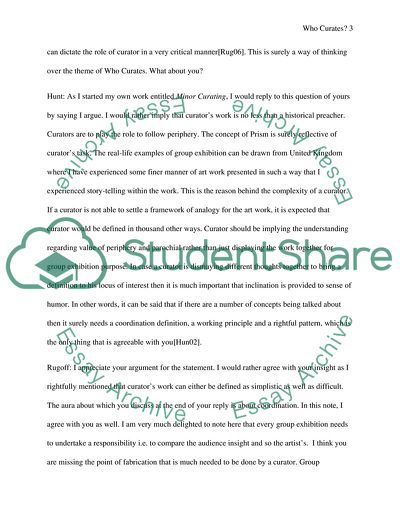Cite this document
(Who Curates A Theme-Based Interview Assignment Example | Topics and Well Written Essays - 2000 words, n.d.)
Who Curates A Theme-Based Interview Assignment Example | Topics and Well Written Essays - 2000 words. https://studentshare.org/visual-arts-film-studies/1806218-who-curates
Who Curates A Theme-Based Interview Assignment Example | Topics and Well Written Essays - 2000 words. https://studentshare.org/visual-arts-film-studies/1806218-who-curates
(Who Curates A Theme-Based Interview Assignment Example | Topics and Well Written Essays - 2000 Words)
Who Curates A Theme-Based Interview Assignment Example | Topics and Well Written Essays - 2000 Words. https://studentshare.org/visual-arts-film-studies/1806218-who-curates.
Who Curates A Theme-Based Interview Assignment Example | Topics and Well Written Essays - 2000 Words. https://studentshare.org/visual-arts-film-studies/1806218-who-curates.
“Who Curates A Theme-Based Interview Assignment Example | Topics and Well Written Essays - 2000 Words”. https://studentshare.org/visual-arts-film-studies/1806218-who-curates.


